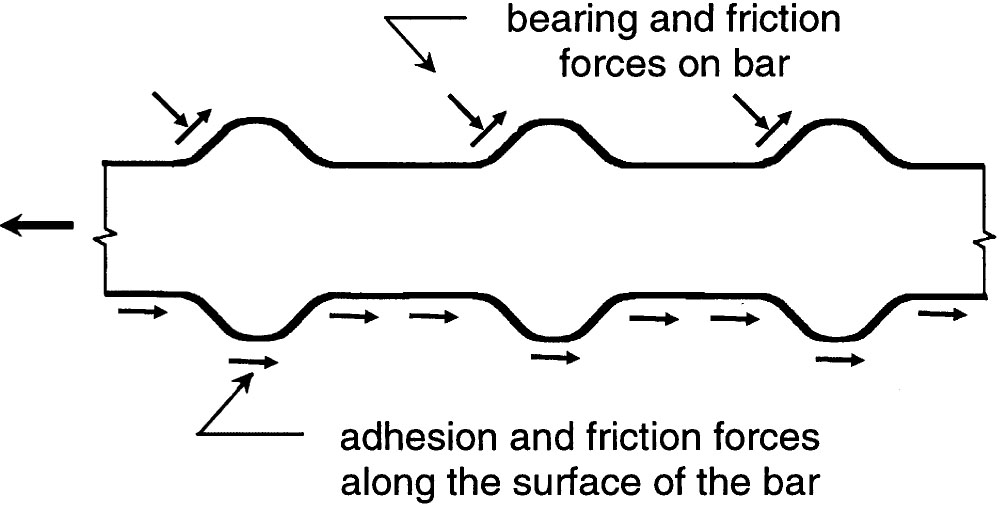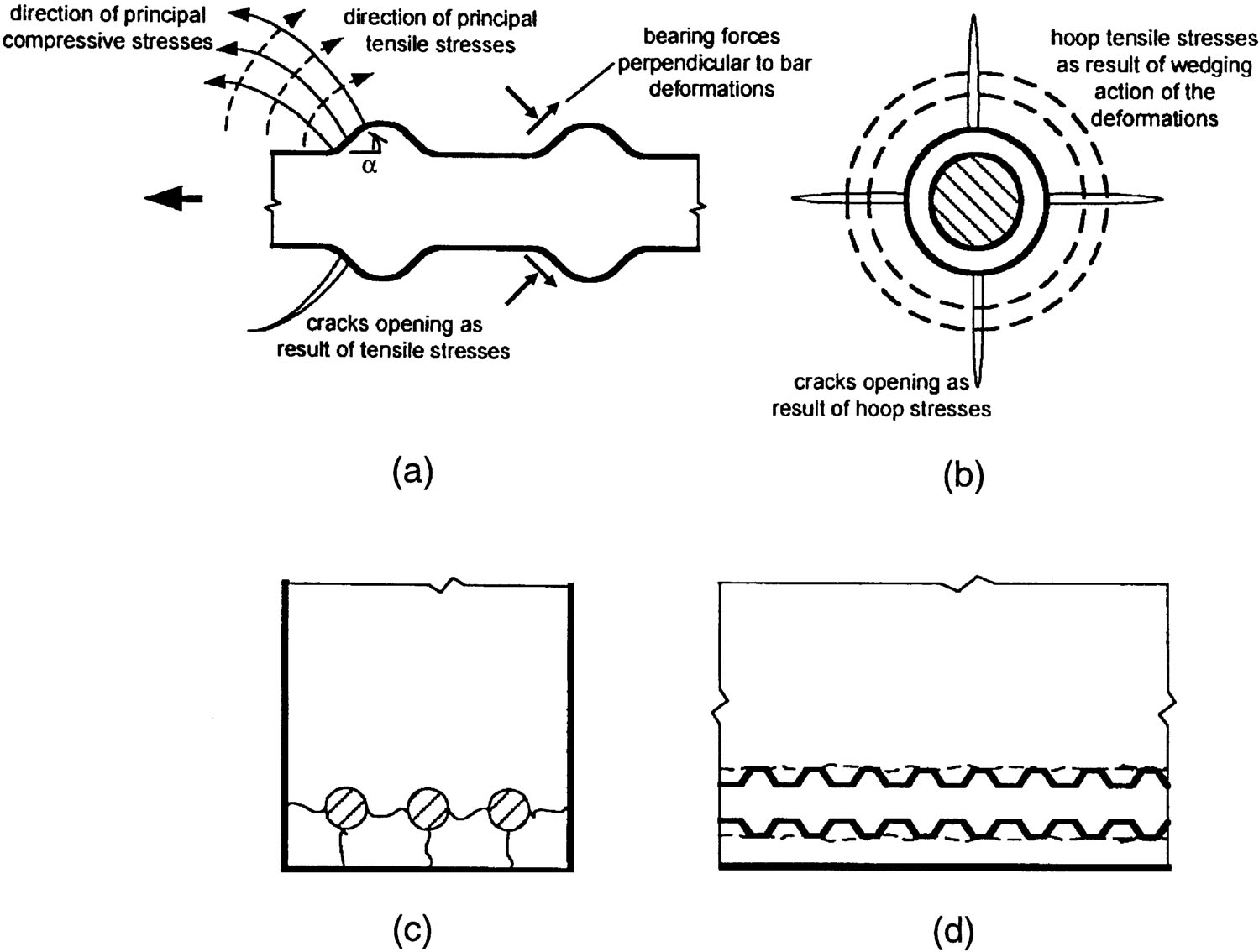Importance of Concrete Cover in Bond Behavior of Concrete structures

1- Bond behavior
In reinforced concrete construction, efficient and reliable force transfer between reinforcement and concrete is required for optimal design. The transfer of forces from the reinforcement to the surrounding concrete occurs for a deformed bar (the following figure) by:
- Chemical adhesion between the bar and the concrete;
- Frictional forces arising from the roughness of the interface, forces transverse to the bar surface, and relative slip between the bar and the surrounding concrete; and
- Mechanical anchorage or bearing of the ribs against the concrete surface.
After initial slip of the bar, most of the force is transferred by bearing. Friction, however, especially between the concrete and the bar deformations (ribs) plays a significant role in force transfer.
it is possible to say that bond resistance is governed by:
- The mechanical properties of the concrete (associated with tensile and bearing strength);
- The volume of the concrete around the bars (related to concrete cover and bar spacing parameters);
- The presence of confinement in the form of transverse reinforcement, which can delay and control crack propagation;
- The surface condition of the bar; and
- The geometry of the bar (deformation height, spacing, width, and face angle).
2- Influences of the concrete cover in bond behavior of concrete structures
as shown in the following figures, The cracks shown in Fig. (a), known as Goto (1971) cracks, can result in the formation of a conical failure surface for bars that project from concrete and are placed in tension. They otherwise play only a minor role in the anchorage and development of reinforcement. The transverse cracks shown in Fig. (b) form if the concrete cover or the spacing between bars is sufficiently small, leading to splitting cracks, as shown in Fig. (c). If the concrete cover, bar spacing, or transverse reinforcement is sufficient to prevent or delay a splitting failure, the system will fail by shearing along a surface at the top of the ribs around the bars, resulting in a “pullout” failure, as shown in Fig. (d). It is common, for both splitting and pullout failures, to observe crushed concrete in a region adjacent to the bearing surfaces of some of the deformations. If anchorage to the concrete is adequate, the stress in the reinforcement may become high enough to yield and even strain harden the bar. Tests have demonstrated that bond failures can occur at bar stresses up to the tensile strength of the steel.
Therefore bond, anchorage, development, and splice strength depend on the materials, spacing and geometry of the reinforcing bar and of course adequacy of the concrete cover.
3- Usual damage in the concrete cover and concrete repair
The more common causes of damage to the concrete cover are as follows:
- Construction defects.- Some of the more common types of damage to concrete cover caused by construction defects are rock pockets and honeycombing, form failures, dimensional errors, and finishing defects. Honeycomb and rock pockets are areas of concrete where voids are left due to failure of the cement mortar to fill the spaces around and among coarse aggregate particles;
- Concretes exposed to freezing and thawing, sulfate soils or waters;
- Abrasion-erosion damage
Not all damaged concrete requires immediate repair. Many factors need consideration before the decision to perform repairs can be made. Obviously, repair is required if the damage affects the safety or safe operation of the structure. Similarly, repairs should be performed if the deterioration has reached a state, or is progressing at a rate, such that future serviceability of the structure will be reduced. For more information please refer to concrete repair and structural strengthening section in this website.





